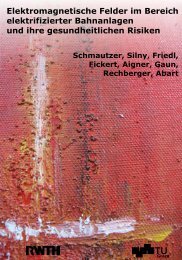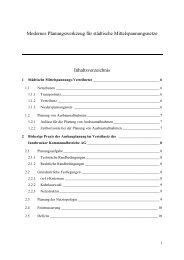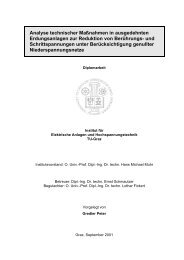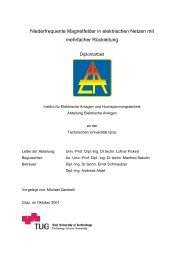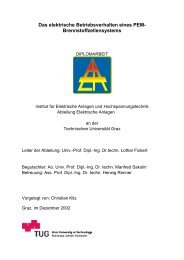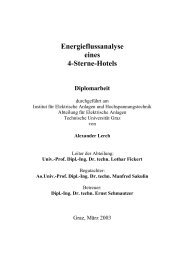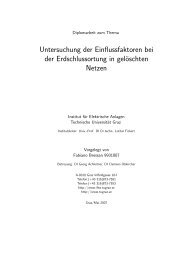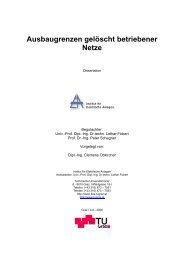Development of a wavelet-based algorithm to detect and determine ...
Development of a wavelet-based algorithm to detect and determine ...
Development of a wavelet-based algorithm to detect and determine ...
Create successful ePaper yourself
Turn your PDF publications into a flip-book with our unique Google optimized e-Paper software.
7.1. THEORY 54<br />
bance.<br />
Step 2: Evaluation <strong>of</strong> the square <strong>of</strong> the <strong>wavelet</strong> coefficients found at step 1.<br />
Step 3: Calculation <strong>of</strong> the dis<strong>to</strong>rted signal energy, in each <strong>wavelet</strong> coefficient level.<br />
The "energy" mentioned above is <strong>based</strong> on the Parseval’s theorem: "the energy that<br />
a time domain function contains is equal <strong>to</strong> the sum <strong>of</strong> all energy concentrated in<br />
the different resolution levels <strong>of</strong> the corresponding <strong>wavelet</strong> transformed signal".<br />
This can be mathematically expressed as:<br />
Where:<br />
N�<br />
|f(n)| 2 =<br />
n=1<br />
N�<br />
|aJ(n)| 2 +<br />
n=1<br />
f(n): Time domain signal in study<br />
J�<br />
j=1 n=1<br />
N: Total number <strong>of</strong> samples <strong>of</strong> the signal<br />
N�<br />
|f(n)| 2 : Total energy <strong>of</strong> the f(n) signal<br />
n=1<br />
N�<br />
|dj(n)| 2<br />
N�<br />
|aJ(n)| 2 : Total energy concentrated in the level "j" <strong>of</strong> the approximated<br />
n=1<br />
J�<br />
j=1 n=1<br />
version <strong>of</strong> the signal.<br />
N�<br />
|dj(n)| 2 :Total energy concentrated in the detailed version <strong>of</strong> the signal,<br />
from levels "1" <strong>to</strong> "j".<br />
(7.1)<br />
Step 4: In this stage the steps 1, 2 <strong>and</strong> 3 are repeated for the corresponding "pure sinu-<br />
soidal version" <strong>of</strong> the signal in study.<br />
Step 5: The <strong>to</strong>tal dis<strong>to</strong>rted signal energy <strong>of</strong> the signal in study (found in step 3) is com-<br />
pared <strong>to</strong> the corresponding one <strong>of</strong> the pure sinusoidal signal version (evaluated<br />
in step 4). The result <strong>of</strong> this comparison is a deviation that can be evaluated by<br />
equation 7.2.<br />
� �<br />
energy(j) − reference_energy(j)<br />
deviation_energy(j)(%) =<br />
· 100% (7.2)<br />
reference_energy(7)<br />
where:



